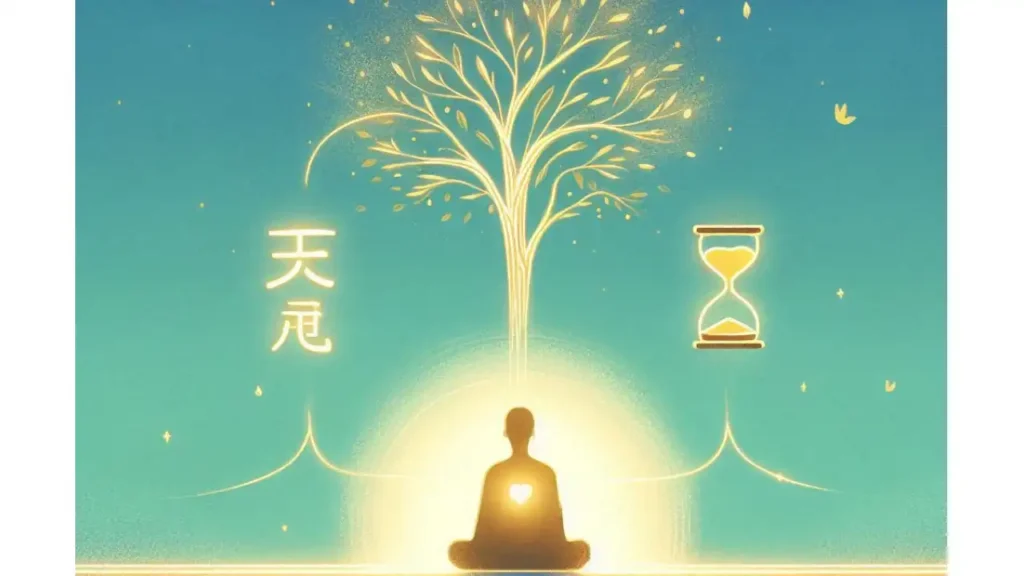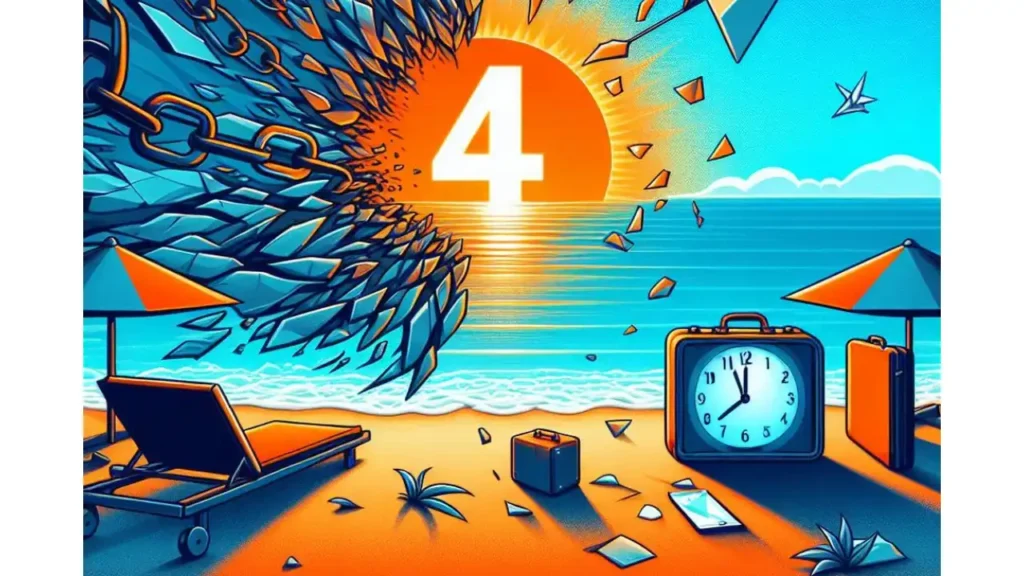Unlock Your Ikigai: The Ultimate 5000-Word Guide to Finding Purpose, Joy, and a Reason to Wake Up
Do you ever get that feeling? The Sunday evening dread, a quiet ache as the weekend fades, knowing that tomorrow morning you’ll be back on the hamster wheel. You have a job, you pay your bills, you might even be “successful” by society’s standards. But deep down, there’s a whisper, a persistent question: “Is this all there is?”
You feel a disconnect between what you do every day and who you truly are. You crave meaning, a sense of purpose that goes beyond a paycheck. You’re not alone. In a world that often values productivity over passion and status over satisfaction, millions are searching for their “why.”
What if there was a map? Not a treasure map to a mythical chest of gold, but a compass for your soul. A framework that has guided people in one of the world’s longest-living cultures for centuries.
Enter Ikigai (生き甲斐).
This beautiful Japanese concept, popularized by the bestselling book “Ikigai: The Japanese Secret to a Long and Happy Life” by Héctor García and Francesc Miralles, is your guide. It doesn’t offer a quick fix or a magic pill. Instead, it provides a profound and practical framework for weaving together your passions, talents, and the needs of the world into a rich tapestry of a life filled with purpose and joy.
In this ultimate 5000-word guide, we are going on a journey to the heart of Ikigai. We will dissect its four essential pillars, explore the 10 rules for a long and happy life, and provide you with a practical workshop to begin discovering your own reason for being. This is more than a book summary; it’s an invitation to start living a life by design, not by default. Prepare to find your reason to jump out of bed every single morning.
What is Ikigai? Deconstructing “A Reason for Being”
At its core, Ikigai translates roughly to “a reason for being” or “the reason you wake up in the morning.” The word is composed of two Japanese characters: “iki” (生き), meaning “life,” and “gai” (甲斐), which describes value, worth, or benefit. It’s the convergence point of what you love, what you’re good at, what the world needs, and what you can be paid for.
It’s crucial to understand that in Japan, Ikigai isn’t necessarily some grand, earth-shattering purpose. It can be found in the small things: the master sushi chef’s dedication to the perfect slice of fish, a gardener’s joy in tending to her cherry blossoms, a teacher’s fulfillment in seeing a student’s eyes light up with understanding. It is the thread of purpose that runs through your daily life.
The Western interpretation, which we will focus on as a powerful tool for self-discovery, is most famously represented by a four-circle Venn diagram. Finding your Ikigai means finding the sweet spot in the center where all four circles overlap.
Let’s take a deep dive into each of these four foundational pillars. This is where the real work of self-discovery begins.
The Four Pillars: Your Compass for a Life of Purpose
To find the center, you must first understand the circles. This requires honest, deep reflection. Forget about what you *should* do for a moment, and focus on the truth.
Pillar 1: What You LOVE
This is the domain of your heart. It’s about passion, curiosity, and pure, unadulterated joy. These are the activities you would do even if no one paid you, the topics you can’t stop learning about, the things that make you lose track of time.
Think about:
- What did you love doing as a child, before the world told you what was “practical”? (Building with LEGOs, drawing, exploring the woods, telling stories).
- What subjects do you read about or watch videos on for fun?
- If you had a completely free Saturday with no obligations, how would you spend it?
- What activities make you feel energized and alive?
Example: Sarah has a stable job in accounting, but what she truly *loves* is baking. She loves experimenting with new recipes, the meditative process of kneading dough, and the joy on people’s faces when they taste her creations. This is a core part of her “What You Love” circle.
Pillar 2: What You Are GOOD AT
This pillar represents your skills and talents, both natural and learned. This isn’t just about professional skills; it’s about your innate abilities. Are you a natural leader? An empathetic listener? Exceptionally organized? Good with your hands?
Think about:
- What skills have you developed through your career, education, or hobbies?
- What do friends and family ask you for help with? (e.g., planning a trip, fixing their computer, giving advice).
- What comes easily to you that seems to be difficult for others?
- What achievements are you most proud of, and what skills did they require?
Example: Continuing with Sarah, she is not just an accountant. She is also exceptionally *good at* simplifying complex processes. At work, she’s the go-to person for creating easy-to-understand financial reports. This skill of “simplifying complexity” is a key entry in her “What You Are Good At” circle.
Pillar 3: What the World NEEDS
This is where you shift your focus from inward to outward. It’s about contribution and service. This doesn’t have to mean solving world hunger (though it can!). It can be a need within your community, your industry, or even your own family. It’s about finding a problem you care about solving.
Think about:
- What injustices or problems in the world make you angry or sad?
- What service could you provide that would make people’s lives better, even in a small way?
- What is missing in your local community? (e.g., a place for young artists, support for new parents, a good coffee shop).
- What positive change do you want to see for the next generation?
Example: Sarah notices that many of her friends, who are creative freelancers, feel overwhelmed and confused by their finances. They are brilliant artists but struggle with taxes and budgeting. The *world* (or at least, her world) *needs* clear, non-intimidating financial guidance for creative professionals.
Pillar 4: What You Can Be PAID FOR
This is the pillar of practicality and reality. Ikigai is not about being a starving artist (unless that is your conscious choice). It’s about creating a sustainable life. This circle forces you to consider the economic value of your skills and passions in the marketplace.
Think about:
- What are people currently willing to pay for?
- What skills do you possess that are in demand in the job market?
- Could any of your hobbies or passions be turned into a business or side hustle?
- What career paths align with your talents?
Example: Sarah is already getting *paid for* her accounting skills. This is a solid, existing foundation for this pillar. Her skill of simplifying complexity also has immense market value in consulting or teaching roles.
The Intersections: Weaving the Circles into a Meaningful Life
Living in just one or two of these circles leads to common states of dissatisfaction. The real magic of the Ikigai framework lies in understanding the intersections.
- Passion (Love + Good At): You’re doing what you love and what you’re good at, but the world doesn’t necessarily need it, and you can’t get paid for it. This can feel fulfilling but leaves you with a sense of uselessness and financial instability. (e.g., A brilliant but unknown musician who only plays for himself).
- Mission (Love + World Needs): You’re doing what you love and what the world needs, but you’re not good at it, and you’re not getting paid. This is the realm of the passionate but ineffective activist. It feels meaningful but can lead to burnout and poverty.
- Profession (Good At + Paid For): You’re doing what you’re good at and getting paid well for it. This is where many people live. It provides comfort and security, but if you don’t love it and don’t feel it serves a need, it can feel hollow and empty. This is the “golden handcuffs” scenario.
- Vocation (World Needs + Paid For): You’re getting paid to do something the world needs, but you’re not particularly good at it, and you don’t love it. This can lead to a constant sense of incompetence and a lack of personal joy.
Case Study: Finding the Center – The Story of Leo
Let’s illustrate with a fictional case study. Leo is a corporate lawyer.
– He’s GOOD AT it: Sharp, analytical, great with contracts.
– He can be PAID FOR it: He makes an excellent salary.
He is living squarely in his **Profession**. But he doesn’t LOVE it, and he feels the WORLD NEEDS something more than another corporate contract written.
On the weekends, Leo explores his other circles.
– He LOVES: Mentoring young people and being outdoors.
– The WORLD NEEDS: Positive role models for at-risk youth and greater environmental awareness.
For years, Leo lives a split life. His Profession pays the bills, while his Mission (volunteering as a Big Brother and on park cleanups) feeds his soul. But he’s exhausted. How can he find his Ikigai?
He starts exploring the intersections. Could he combine his legal skills (Good At) with his love for the environment (Love + World Needs)? He could become an environmental lawyer. This moves him towards the center. He would be using his skills (Good At), getting paid (Paid For), helping the planet (World Needs), and engaging a topic he cares about (Love).
This is Leo’s Ikigai: To use his legal expertise to protect the natural world and mentor the next generation of environmental advocates. He might take a pay cut, but his life is now integrated, purposeful, and joyful. He jumps out of bed in the morning.
More Than a Career: The 10 Rules of Ikigai for a Long, Happy Life
The book’s authors spent time in Ogimi, a village in Okinawa, Japan, which is a “Blue Zone”—a region with one of the highest concentrations of centenarians in the world. They discovered that Ikigai was not just about work; it was a holistic lifestyle. They distilled their observations into ten rules.
- Stay active; don’t retire.
In Ogimi, there is no word for retirement in the Western sense. People continue to do what they love and what they’re good at for as long as they are able. It’s about continuing to have a purpose that keeps you moving, both physically and mentally. - Take it slow.
The modern obsession with “hustle” is the enemy of a happy life. When you leave urgency behind, life and time take on a new meaning. Do one thing at a time, and do it with your full attention. - Don’t fill your stomach.
The Okinawans follow the 80% rule, or “hara hachi bu.” They stop eating when they feel about 80% full. This gives their bodies energy to live, rather than spending all their energy on digestion. It’s a simple practice of moderation. - Surround yourself with good friends.
Community is the best medicine. Okinawans form close-knit social groups called “moai,” which provide financial, emotional, and social support for a lifetime. Your friends are the family you choose. - Get in shape for your next birthday.
Your body is the vehicle for your life’s journey; it needs daily maintenance. The people of Ogimi practice gentle, daily movements like walking, gardening, and light exercises like Radio Taiso. - Smile.
A cheerful attitude is not only pleasant for others; it’s a powerful relaxant for you. Acknowledge the challenges of life, but don’t forget the privilege of being here, now. A smile can open doors and lighten hearts. - Reconnect with nature.
We are part of the natural world, and we need it to recharge our batteries. Make time each day to be in nature, whether it’s a walk in a park, tending to a houseplant, or simply watching the clouds. - Give thanks.
Cultivate a practice of gratitude. Give thanks for your ancestors, for the food you eat, for the friends you have, and for the air you breathe. This shifts your focus from what you lack to what you have. - Live in the moment.
Stop regretting the past and fearing the future. Everything you have is today. Make it worth remembering. This is the essence of mindfulness—paying attention to the present moment without judgment. - Follow your Ikigai.
If you have not yet found your Ikigai, your mission is to begin the search. Once you find it, it will be the driving force that gives your life meaning and pushes you to make every day a joyful adventure.
The Feeling of Ikigai: Getting into the “Flow”
How do you know when you are living your Ikigai? The feeling is often described as “flow.” Coined by psychologist Mihaly Csikszentmihalyi, flow is a mental state where a person is fully immersed in an activity with a feeling of energized focus, full involvement, and enjoyment.
“The best moments in our lives are not the passive, receptive, relaxing times… The best moments usually occur if a person’s body or mind is stretched to its limits in a voluntary effort to accomplish something difficult and worthwhile.”
You’ve experienced flow before. It’s the musician lost in their song, the programmer deep in code, the writer for whom hours pass like minutes, the athlete “in the zone.”
Flow happens when a task is the perfect match for your skill level: it’s not so easy that you get bored, and not so hard that you get anxious. It is the sweet spot of challenge and competence. Actively seeking out activities that put you in a state of flow is a direct way to connect with your Ikigai.
Your Personal Ikigai Workshop: 20 Questions to Find Your Purpose
Reading about Ikigai is inspiring. Discovering your own is life-changing. Grab a notebook and a pen. Give yourself at least an hour of quiet, uninterrupted time. Be honest. Don’t judge your answers. Just write.
Part 1: What Do I Love?
- What activities make me lose track of all time?
- What did I enjoy doing as a child that I’ve forgotten about?
- If I didn’t have to worry about money, what would I do with my time?
- What topics do I find myself reading or talking about endlessly?
- What part of my day do I most look forward to?
Part 2: What Am I Good At?
- What skills have I been praised for by others?
- What comes naturally to me?
- What skills have I invested time and effort in developing?
- What kind of problems are people always asking me to solve for them?
- In my life, what achievements am I most proud of? What skills did they require?
Part 3: What Does the World Need?
- What change would I love to see in my local community?
- What global problem touches my heart?
- What kind of help do the people I care about most often need?
- If I could create one thing to make the world a slightly better place, what would it be?
- What service or product do I wish existed?
Part 4: What Can I Be Paid For?
- What skills do I have that are valuable in the current market?
- Are there any of my passions that people would pay money for?
- What work could I do that would provide me with a sense of financial security?
- Looking at job listings, what roles excite me and align with my skills?
- How could I combine my talents to create a unique service or business?
Once you have your lists, look for the overlaps. Where does your love for storytelling intersect with the world’s need for empathy and your skill in writing? Where does your talent for organizing meet your community’s need for better events and the ability to get paid as an event planner? The clues to your Ikigai are hidden in these answers.
Conclusion: Your Ikigai is a Journey, Not a Destination
Finding your Ikigai is not a single, lightning-bolt moment of revelation. For most, it is a gradual process of exploration, experimentation, and listening to the quiet whispers of your heart. It may change and evolve as you do. Your Ikigai in your 20s might be different from your Ikigai in your 60s.
The true power of this framework is that it gives you a compass. When you feel lost or stuck, you can return to the four circles. Am I neglecting something I love? Am I not using my best skills? Am I disconnected from the needs of others? Am I worried about my financial stability?
By striving to live at the intersection of these four worlds, you create a life that is not just successful, but significant. A life that is not just long, but deep. A life where you wake up each morning not with a sigh of resignation, but with a quiet, powerful sense of purpose. You wake up with a reason. You wake up to your Ikigai.
Frequently Asked Questions about Ikigai
- 1. Do I have to quit my job to find my Ikigai?
- Absolutely not. For many people, their job is their Profession (what they’re good at + paid for). Their Ikigai can be found by integrating their “Love” and “World Needs” into their life outside of work through hobbies, volunteering, side projects, or community involvement. Over time, these activities might grow into a new career, but it doesn’t have to start that way.
- 2. What if I have more than one Ikigai?
- That’s perfectly normal and even healthy! You might have a “work Ikigai” and a “family Ikigai.” For example, being a dedicated teacher (your profession) and being a supportive and present parent (a different kind of purpose). Life is complex, and you can find meaning and purpose in multiple domains.
- 3. Is Ikigai just the same as “finding your passion”?
- No, and this is a key distinction. “Follow your passion” is often incomplete advice because passion only covers one of the four circles. Ikigai is more robust because it grounds your passion in reality by connecting it to your skills, the needs of the world, and economic sustainability. It’s passion with a plan and a purpose.
- 4. What if I feel like I’m not good at anything or don’t love anything?
- This is a common feeling when you’re disconnected from yourself. The key is to start small and experiment. Try a new hobby for a month (pottery, coding, learning a language). Volunteer for a cause you care about. The goal is to generate new experiences. You can’t discover what you love or what you’re good at from the couch. Action and exploration are the antidotes to feeling stuck.







